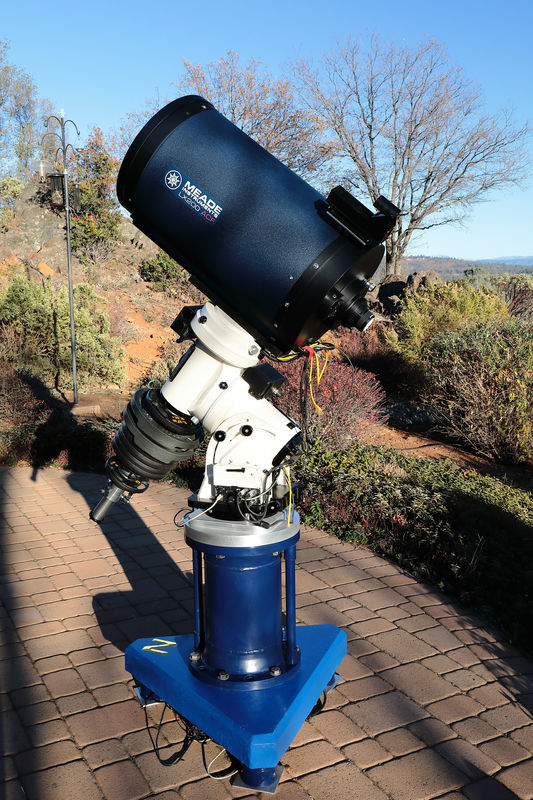Conjunction
Dec 20, 2020 15:36:04 #
Ballard
Loc: Grass Valley, California
Here are some shots of the conjunction of Jupiter and Saturn from the late afternoon to early evening on December 18th. These where all taken at a 4096mm focal length and using a Canon full Frame DSLR in 4K video in order to stack the frames. With this format both planets just barely fit into the the video frame, however they will be at there closest on December 21st and skies permitting I hope to get some more shots then. The planets are low on the south western horizon just after sunset. Due to there low altitude there a lot of atmospheric distortion which the stacking helps with but can only do so much. There was also a fair amount of atmospheric dispersion (the air acting like a prism splitting out the colors that I could partially correct for my slightly shifting the red and blue channels of the image.
This is the closest conjunction since July 16th 1623 and Jupiter and Saturn won't be this close again until March 15th 2080. Note: the 1623 conjunction was not visible from most northern latitudes due to the conjunctions proximity to sun at the time.
The first shot below was taken at just after 4:30PM in the late afternoon and there was some high cloudiness giving a slightly milky appearance to sky, the contrast was jacked way up to bring out the planets during this daytime shot.
The next shot was taken right at sunset, in this image the high clouds show some redden from the setting sun.
The next shot was taken after it had gotten dark enough to catch the planetary moons. This is actually a composite image made with different exposures for Jupiter, Saturn and there respective moons so that I could bring out the planets and there moons with out blowing out Jupiter and Saturn due to the great difference in brightness of all these objects (download is best to see the moons).
The next sequence shows the images used to create the composite image.
All comments, questions and suggestions are welcome.
This is the closest conjunction since July 16th 1623 and Jupiter and Saturn won't be this close again until March 15th 2080. Note: the 1623 conjunction was not visible from most northern latitudes due to the conjunctions proximity to sun at the time.
The first shot below was taken at just after 4:30PM in the late afternoon and there was some high cloudiness giving a slightly milky appearance to sky, the contrast was jacked way up to bring out the planets during this daytime shot.
The next shot was taken right at sunset, in this image the high clouds show some redden from the setting sun.
The next shot was taken after it had gotten dark enough to catch the planetary moons. This is actually a composite image made with different exposures for Jupiter, Saturn and there respective moons so that I could bring out the planets and there moons with out blowing out Jupiter and Saturn due to the great difference in brightness of all these objects (download is best to see the moons).
The next sequence shows the images used to create the composite image.
All comments, questions and suggestions are welcome.
Daylight image of the conjunction
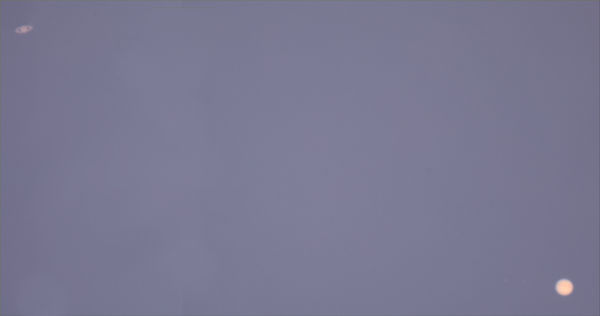
(Download)
Conjunction at sunset (note the slightly redden clouds)
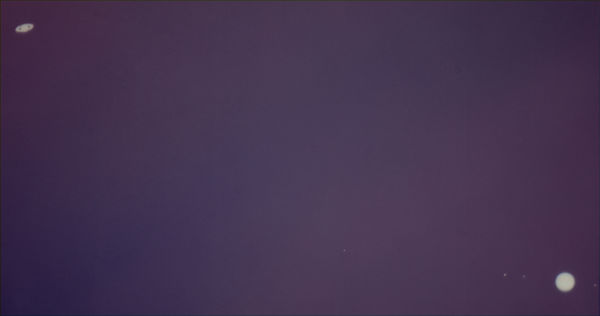
(Download)
Composite image showing the planets and moons. Note: the moons of Jupiter are actually much brighter than those of Saturn so brightness can only be compared between the moons of a given planet in this shot
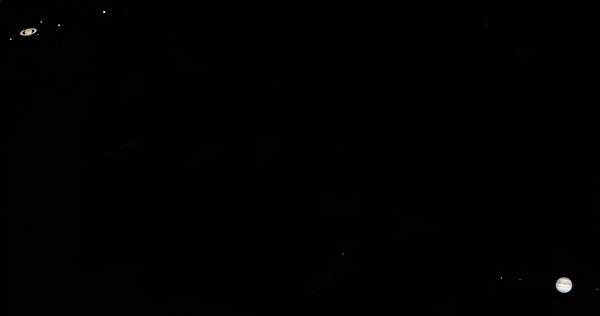
(Download)
Correctly exposed image of Jupiter, Saturn is dimly visible and is use to alignment subsequent images
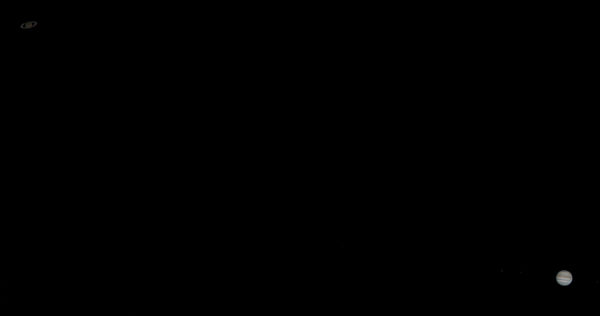
(Download)
Saturn exposed correctly with Jupiter's moons brightened and Jupiter manually dimmed way down for composite image
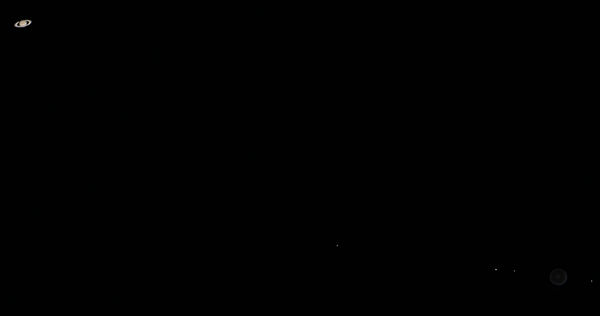
(Download)
Highly over exposed shot of the planets to catch Saturn's moons. This was a single shot put into the video aspect ratio. Note the high clouds show some glow from Jupiter's brightness
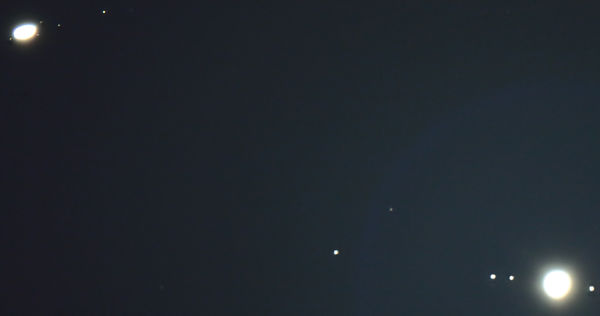
(Download)
Image of only Saturn's moons, gleaned from the previous shot for use in the composite image.
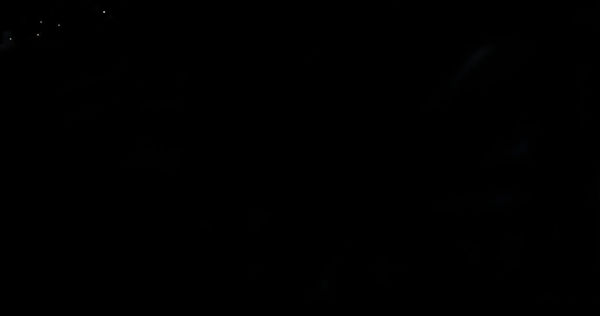
(Download)
Final image with the names of the visible moons labeled
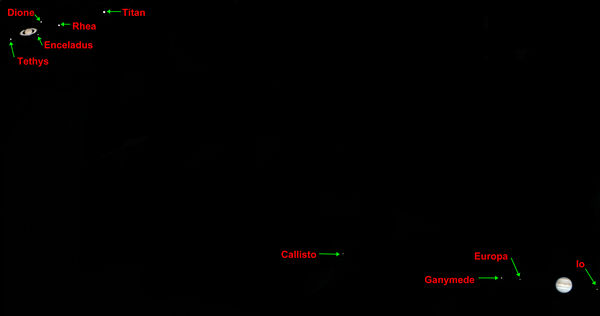
(Download)
Dec 20, 2020 16:08:55 #
Dec 20, 2020 16:10:35 #
Ballard
Loc: Grass Valley, California
Cookie223 wrote:
Very impressive, and incredible.
Thanks for sharing.
Thanks for sharing.
Hi Cookie223
Thanks for checking out the images and for the comment.
Dec 20, 2020 16:18:40 #
David Martin
Loc: Cary, NC
Great work. What did you use to obtain the 4096mm focal length? Or should I ask, what is your astrophotography set up?
Dec 20, 2020 16:25:56 #
Ballard
Loc: Grass Valley, California
David Martin wrote:
Great work. What did you use to obtain the 4096mm focal length? Or should I ask, what is your astrophotography set up?
Hi David Martin.
Thanks for checking out the images. For these shots I used a 16.25 inch Schmidt Cassegrain at F10 and a Canon 5D markIV DSLR. The scope is mounted on an Astrophysics 1600 GTO mount. Below is a shot of the scope.
Dec 20, 2020 16:31:39 #
Dec 20, 2020 16:35:32 #
Dec 20, 2020 16:36:00 #
Dec 20, 2020 17:09:30 #
Ballard
Loc: Grass Valley, California
Longshadow wrote:
Cool shots and information.
Hi Longshadow
Thanks for checking out the conjunction images and for the comment.
Dec 20, 2020 17:10:13 #
Ballard
Loc: Grass Valley, California
SouthShooter wrote:
Well done
Hi SouthShooter
Thanks for checking out the pictures of the conjunction and for the comment.
Dec 20, 2020 17:11:08 #
Ballard
Loc: Grass Valley, California
fjdarling wrote:
Wow, great shots!
Hi fjdarling
Thanks for the comment and checking out the pictures of the conjunction.
Dec 20, 2020 18:04:48 #
David Martin
Loc: Cary, NC
Ballard wrote:
Hi David Martin.
Thanks for checking out the images. For these shots I used a 16.25 inch Schmidt Cassegrain at F10 and a Canon 5D markIV DSLR. The scope is mounted on an Astrophysics 1600 GTO mount. Below is a shot of the scope.
Thanks for checking out the images. For these shots I used a 16.25 inch Schmidt Cassegrain at F10 and a Canon 5D markIV DSLR. The scope is mounted on an Astrophysics 1600 GTO mount. Below is a shot of the scope.
Wow! Very impressive. Thanks for sharing.
Dec 20, 2020 18:21:42 #
Now THAT's what I was looking for!! Why cant I get such shots with a $1,000 lens? hehe
Dec 20, 2020 20:38:38 #
Ballard
Loc: Grass Valley, California
RGreenway wrote:
Now THAT's what I was looking for!! Why cant I get such shots with a $1,000 lens? hehe
Hi RGreenway
I assume that you saw my comment in the Astronomical Forum. Thanks for checking out the image. For these shots a smaller scope (4-8inch) could do just as well since the limiting factor for planetary detail was the atmospheric turbulence. The larger aperture just means I can use a shorter exposure for a given focal length. You would still need a guiding mount for the 2.5 second exposure to get the moons of Saturn captured. Still a several thousand dollar expense, but worth it for a great hobby if you enjoy it.
Dec 21, 2020 07:07:16 #
PaulBrit
Loc: Merlin, Southern Oregon
What great photographs. Beyond my ability in both craft and expense but that doesn’t stop me from admiring your great skills. Fantastic!
If you want to reply, then register here. Registration is free and your account is created instantly, so you can post right away.

